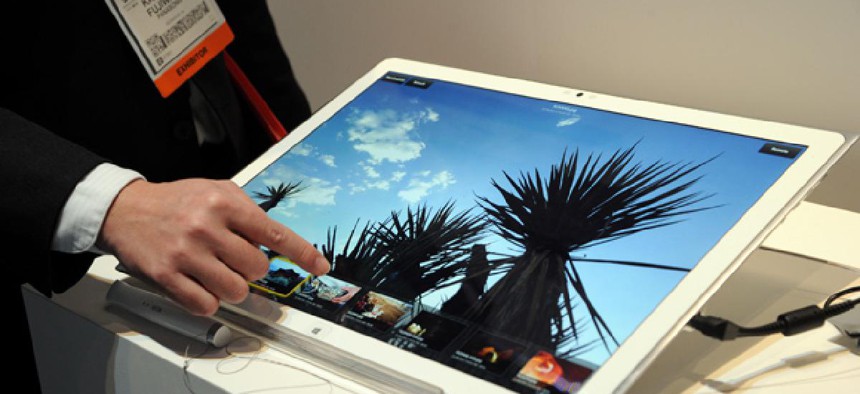Here Comes the Parade of Computing Interfaces That Want to Replace the Touchscreen

Al Powers/Invision for Panasonic/AP
Over the next six months or so, we're going to see an explosion of new ways of interacting with computers, televisions, and mobile devices.
The interfaces are coming! Over the next six months or so, we're going to see an explosion of new ways of interacting with computers, televisions, and mobile devices. Many of them are radical departures from the way things have been done, which is exciting. I'll run several down in this post that are slated to come out this year.
Almost all of them will fail quickly and be forgotten forever. But there's a chance that one of these new technologies will hit a consumer sweetspot and become enshrined in our lives like the remote control or the keyboard.
For decades after the creation of the graphical-user interface and the widespread adoption of the mouse, the computing interaction paradigm was largely static. You had a keyboard and a pointer on the screen that you controlled in some way, usually a mouse, but sometimes a touchpad or pointing stick (aka "red nubby thing on old Thinkpads").
Try as people might, and people like Microsoft's Bill Buxton have archived the evidence that they did, people liked the basic computing setup. It was fast and accurate, familiar and decently intuitive.
But the iPhone -- and the brilliant iOS software and declining multi-touch display prices -- cracked that computing paradigm wide open. And for the last half a decade, touchscreens have more or less taken over for mobile computing. At the same time, gesture interfaces from Nintendo and Microsoft in the gaming space exploded, marking a serious move away from the traditional controller for non-hardcore gamers.






